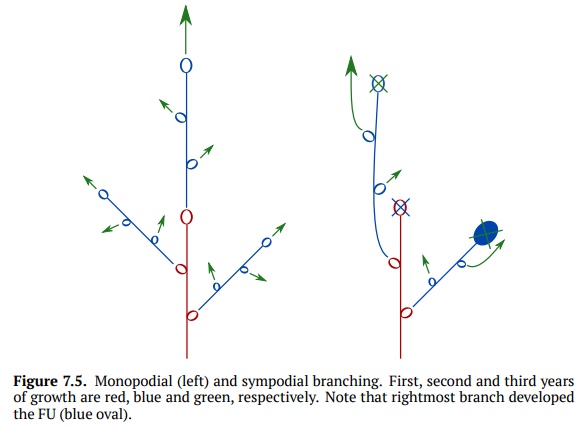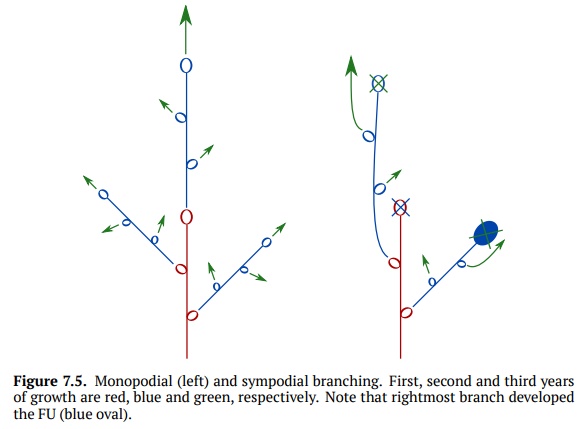Chapter: Introduction to Botany: The Origin of Trees and Seeds
Branching Shoot

Branching Shoot
Branching in seed
plants is based on the axial buds. These buds are located in axils of leaves
and develop into secondary shoots. There are two main types of branching:
monopodial and sympodial (Fig. 7.5). Monopodial branching is when the buds
do not degrade and all the shoots continue to grow. Sym-podial branching is when the terminal buds do degrade (make FU
and/or dieout) and the lateral shoot closest to the terminal bud now becomes
the termi-nal shoot and continues the vertical growth. This happens because the
terminal SAM suppresses the downstream meristems by producing the auxin hormone
(apical dominance). Apical dominance is a basis of multiple gardening trimming
techniques.
Monopodial branching
creates the conical (spruce-like) crown whereas sympo-dial branching will
create crowns of many different shapes. Monopodial growth is considered to be
more primitive. Some monopodial trees may even die if the terminal bud is
damaged. An even more ancestral mode of branching is dichoto-mous, when every branch splits into two; this is frequent
in lycopods and someother Pteridophyta.

Related Topics